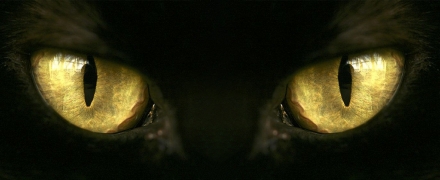open 10 am - 7 pm
laboratory is closed
"Cat's Eye"

Let's continue the topic of optical effects in stones that we started. Today we will focus on the "cat's eye" phenomenon. Usually stones with the effect of "cat's eye" are valued as amulets, amulets, but this function of such stones nowadays is inferior to the decorative properties of inserts with an unusual moving light strip, reminiscent of a pupil in a cat's eye, closely observing others. The optical phenomenon of "cat's eye" is caused by the irisation effect - the reflection of light from the smallest optical obstacles inside the stone, which are gaseous, liquid or multiphase inclusions inside the stone, mineral inclusions or grain contact boundaries in a mineral aggregate. But a prerequisite for the occurrence of such a phenomenon is the presence of elongated thin irregularities inside the stone and their orientation along one direction, as a rule, this is one of the higher-order axes or the direction of crystal elongation. Stones with the "cat's eye" effect include chrysoberyl, as well as its variety alexandrite, beryl (including emerald), tourmaline, sillimanite, tourmaline, chrysolite, quartz, corundum, various garnets (mainly almandine, pyrope, grossular and andradite ). Also, the effect of "cat's eye" is found in other minerals and their varieties. Jewelry and ornamental stones with the "cat's eye" effect include polycrystalline (quartz, magnesioribekite, etc.) or polymineral aggregates - quartz-ribekite ("hawk's eye"), quartz-limonite ("tiger's eye"), etc. Among jewelry ornamental stones, which are rocks, this effect can be characteristic of jade, jewelry and ornamental varieties of serpentinite, obsidian and a number of others.
В геммологической практике бывают весьма увлекательные случаи с диагностикой ювелирных вставок
Но помимо редкости цвета и высокой стоимости таких камней, многие розовые камни выделяются одной замечательной особенностью – они проявляют плеохроизм, то есть в зависимости от положения осмотра камня он может иметь дополнительные оттенки – оранжевый или пурпурный.
Currently, gemstones are produced by two fundamentally different technological methods - the High Pressure - High Temperature method (“HPHT”, High-pressure & High-temperature) and the Chemical Vapor Deposition (“CVD”, Chemical vapor deposition) method. The "HPHT" method is the most tested classical synthesis method, which can be used both carbon deposition on diamond from flux melts and catalytic reactions. In "CVD" synthesis, diamond growth occurs on a seed during carbon deposition mainly from a gaseous medium at relatively low temperatures and pressures.
Jewelry and precious stones are just such a category of goods, when buying which you need to pay attention to many criteria.
Sogdianite is a rather rare mineral and more often it can be found as a collection material (moreover, in systematic collections), and it is extremely rare in jewelry.






